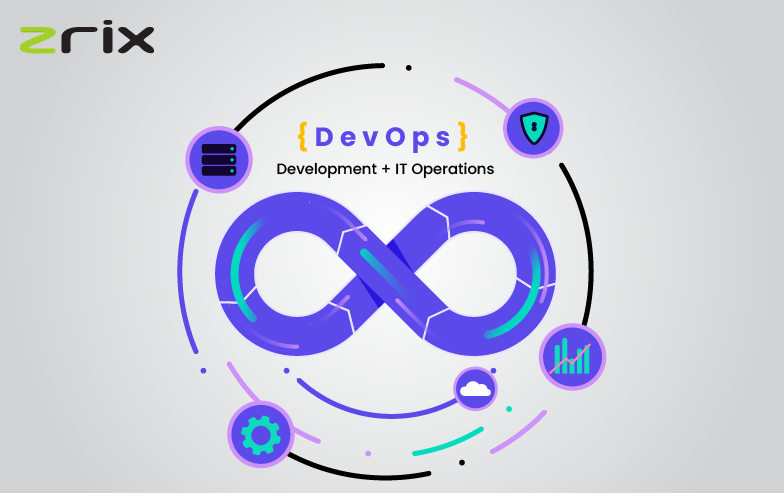Quick Navigation
In today’s hyper-competitive digital environment, software delivery speed is more than a metric—it’s a critical factor for success. Whether you're a startup or an enterprise, slow releases can cost you customers, reduce revenue, and stall innovation. Often, the culprit lies in a broken or inefficient DevOps pipeline. If you’re dealing with deployment pipeline delays or DevOps workflow challenges, it’s time to act. This article will guide you through proven strategies to improve DevOps flow, accelerate software delivery, and fix the core issues affecting your releases.
Why Is Your DevOps Flow Slowing You Down?
An optimized DevOps pipeline is like a high-speed conveyor belt—moving code from development to deployment seamlessly. When it’s not functioning well, even the best development teams can’t perform efficiently. Many organizations suffer from:
- Manual processes that slow everything down
- Poor collaboration between Dev and Ops
- Inefficient CI/CD processes that lead to bottlenecks
- A lack of visibility into the deployment lifecycle
These issues directly lead to deployment pipeline delays, missed deadlines, and unsatisfied customers.
The Need for DevOps Performance Optimization
DevOps performance optimization is the process of making your pipeline faster, more reliable, and more scalable. It involves removing inefficiencies, automating repetitive tasks, improving collaboration, and implementing the right tools.
Let’s explore how you can fix DevOps pipeline issues and take back control of your software releases.
Step 1: Identify What’s Broken
Before you can fix anything, you need to know what’s causing the problem. Common issues include:
- Lack of Automation
Manual deployments are not only slow but also error-prone. By implementing release automation tools, you can automate tasks like testing, building, and deploying code. This not only saves time but also improves accuracy. - Inefficient CI/CD Pipeline
Your CI/CD process is the heart of your DevOps pipeline. If it's bloated or poorly configured, it will slow down everything. Regular audits of your pipeline can help you streamline the CI/CD process and eliminate unnecessary steps. - Poor Communication
Without strong communication between teams, mistakes happen and time is wasted. This is where Agile DevOps practices come into play—daily stand-ups, sprint reviews, and retrospectives ensure everyone stays aligned. - Lack of Feedback and Monitoring
Real-time feedback loops and robust monitoring systems allow your teams to spot problems early and fix them before they grow. This leads to faster, more stable releases.
Step 2: Implement DevOps Pipeline Optimization Strategies
Once the problem areas are identified, it’s time to put solutions into action. Here are proven strategies to get your pipeline running at full speed:
- Automate Everything You Can
Start with implementing release automation tools to automate testing, integration, and deployment. This minimizes manual intervention and reduces human error, while also boosting your software delivery speed. - Simplify and Refine CI/CD Processes
Use tools like Jenkins, GitHub Actions, or GitLab CI to streamline CI/CD processes. Break your deployment into smaller, manageable stages. Use parallelism to speed up builds, and employ caching wherever possible. - Adopt Agile DevOps Practices
Bringing Agile DevOps practices into your workflow encourages continuous improvement. Regular iterations, team retrospectives, and collaborative planning sessions ensure constant feedback and better alignment across development and operations. - Implement Monitoring and Feedback Loops
Tools like Prometheus, Grafana, and ELK Stack give you visibility into your systems. Use them to monitor builds, detect bottlenecks, and understand where delays are happening. A good feedback loop also includes team input to improve internal processes.
Step 3: Consider a DevOps Development Services Company
If these challenges seem overwhelming or if your in-house resources are stretched too thin, it might be time to work with a DevOps Development Services Company.
These companies specialize in helping organizations fix DevOps pipeline issues and optimize their workflows. Here’s how they can help:
- Expert Pipeline Optimization
They analyze your current pipeline, identify weak points, and implement custom DevOps pipeline optimization strategies tailored to your workflow and tech stack. - Automation and Tooling Support
A seasoned DevOps development services company can recommend and implement the best release automation tools for your environment—ensuring that your deployments are faster and more reliable. - Team Training and Best Practices
Your internal team benefits too. These service providers often offer training and knowledge transfer sessions to help your developers adopt Agile DevOps practices and work more efficiently. Continuous Improvement
By establishing a culture of ongoing refinement, these companies help you stay ahead of the curve. Regular performance audits and updates keep your DevOps performance optimization efforts sustainable and future-ready.
Benefits of Fixing Your DevOps Flow
When you successfully improve DevOps flow, the benefits are immediate and impactful:
- Faster and more reliable releases
- Better collaboration across teams
- Reduced production errors
- Lower operational costs
- Higher customer satisfaction
And in the long term, it helps build a resilient development ecosystem that can adapt quickly to change.
Slow releases are more than just an annoyance—they can become a critical business risk. Fortunately, by focusing on DevOps performance optimization, using the right DevOps pipeline optimization strategies, and perhaps partnering with a DevOps Development Services Company, you can overcome these challenges.
Now is the time to accelerate software delivery, eliminate deployment pipeline delays, and build a future-ready pipeline. Don't let inefficiencies hold you back—streamline your CI/CD process, adopt modern Agile DevOps practices, and make your DevOps flow a true engine of innovation.



